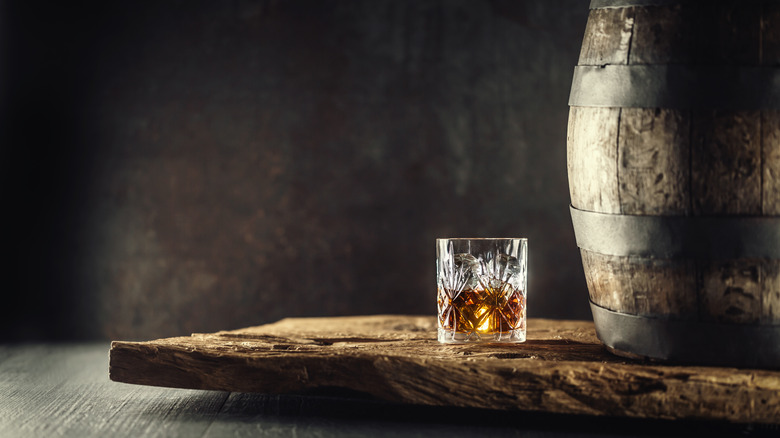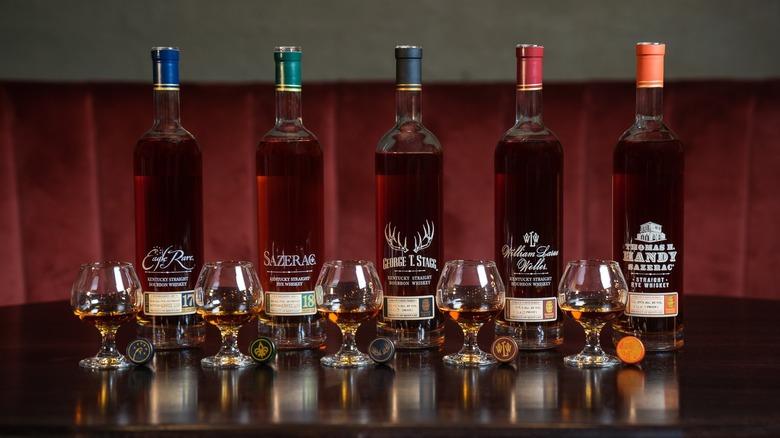Taxes Play A Bigger Role In The Price Of Bourbon Than You Might Think
The bourbon market has been booming. In fact, since 2000 production of the iconic American spirit has ramped up 360% to meet the rising interest on the part of consumers. But demand isn't the only thing driving up the prices for the product. The wide variety of taxes and tariffs placed on bourbon also contribute significantly to the prices being charged for it. And yes, those prices keep going up.
Over a recent five-year period, American whiskey pricing spiked by 9%, with the cost of the average bottle jumping from $40.53 to $44.12. Bourbon lovers will find few of their favorites at those prices, however. There are now many bourbons retailing for upwards of $100 per bottle, with those in the super-premium category fetching even more exorbitant prices. Don't even ask about a bourbon like Pappy Van Winkle, which is almost impossible to find, and prohibitively expensive. So how much of these prices are driven by demand, and how much by taxes? The answer is both surprising and nuanced.
How taxes and retail markups affect bourbon pricing
Taxes on bourbon are easily the most expensive aspect of its production, accounting for about 60% of the cost. These taxes include the state, local, and federal excise varieties, as well as tariffs imposed on international sales. These tariffs are sometimes raised dramatically for reasons bourbon producers have little to no control over, with potentially catastrophic results for sales volume.
But the most damaging levy for Kentucky's bourbon makers is the barrel tax. Akin to a property tax, distilleries are not only obliged to pay the tax on each barrel aging in their rickhouses, but pay it over and over each year. A 12-year-old bourbon, for example, is barrel taxed 12 times. Kentucky is unique in this respect, as levying this sort of penalty on native spirits is unknown anywhere else — in the U.S. or internationally.
Although taxes are a major factor in the rising cost of the average price of bourbon, retailers are also to blame. The first two tiers of the bourbon sales chain — distilleries and wholesalers — are both motivated to keep prices competitive to drive volume. However, the final tier, retailers, are under no such obligation. Typically, list prices for bottles remain closely tied to the manufacturer's suggested retail price, but in the case of sought-after rarities like Pappy Van Winkle, intense demand allows for exorbitant markups.

